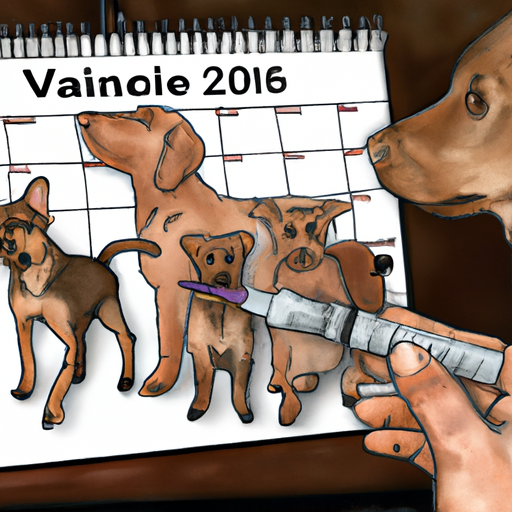As an adoring pet owner, you’re responsible for the well-being of your canine companion. One of the crucial aspects of pet care is ensuring they receive the appropriate vaccinations, including one for the deadly disease rabies. But exactly how often should dogs get the rabies vaccine? Let’s dive into the details.
- Table of Contents
- Understanding Rabies and its Impact on Dogs
- Importance of Rabies Vaccination
- Vaccination Schedule for Dogs
- Adverse Reactions and Precautions
-
Frequently Asked Questions
-
Key Takeaways
- Rabies is a deadly disease that affects the nervous system of mammals, including dogs.
- Rabies vaccination is required by law in most places.
- Puppies should receive their first rabies shot at 12-16 weeks.
- Dogs usually get a rabies vaccine every 1-3 years.
- Some potential side effects can occur, including mild fever and swelling.
Understanding Rabies and its Impact on Dogs
Rabies is a fatal viral infection that affects the central nervous system of mammals, including dogs. The virus, transmitted through the bite of an infected animal, can lead to a range of symptoms, from behavioral changes and paralysis to death. What makes rabies particularly alarming is its potential transmission to humans. Hence, it’s crucial to understand the importance of preventative measures, like the rabies vaccine.
Importance of Rabies Vaccination
The most effective way to prevent rabies is through vaccination. Rabies vaccines stimulate the immune response, helping your dog fight off the virus if they ever get exposed. Moreover, rabies vaccination for dogs is not just a recommendation; it’s a legal requirement in many places. This rabies laws by state guide can help you understand the rules in your region.
Vaccination Schedule for Dogs
So, how often should your dog get a rabies vaccine? The vaccination schedule varies based on your dog’s age, health, and local laws. Typically, puppies receive their first rabies shot between 12-16 weeks of age, followed by a booster shot a year later. After this, dogs usually get a rabies vaccine every 1-3 years, depending on the type of vaccine used and local regulations.
It’s essential to consult with a trusted vet to determine the best vaccination schedule for your pet. If you need a reliable vet service, consider checking out this vet locator.
Table 1: Typical Rabies Vaccination Schedule for Dogs
| Age of Dog | Vaccination |
|---|---|
| 12-16 weeks | First rabies shot |
| 1 year | Booster shot |
| Every 1-3 years | Regular rabies shots |
Adverse Reactions and Precautions
While rabies vaccines are generally safe, some potential side effects can occur, including mild fever, loss of appetite, and swelling at the injection site. In rare cases, more severe reactions can occur. Regular check-ups can help monitor your dog’s health and ensure they’re responding well to the vaccine. Read more about vaccine reactions in dogs here.
Frequently Asked Questions
- Can my dog get rabies after vaccination?
-
It’s extremely rare, but not impossible. However, vaccinated dogs that do contract rabies tend to have milder symptoms and a better survival rate.
-
What happens if I don’t vaccinate my dog?
-
Besides risking your dog’s health, you could be violating laws and face penalties. Also, if your dog bites someone, legal complications could arise.
-
Can rabies vaccine make my dog sick?
-
Some dogs might experience mild side effects, but severe reactions are rare. If your dog seems unwell after vaccination, consult your vet immediately.
-
Is it ever too late to vaccinate my dog?
- While it’s best to start when your dog is a puppy, it’s never too late to vaccinate your pet. Adult dogs can and should be vaccinated, especially if they’re at risk of exposure.
Remember, vaccinating your dog against rabies is not just about protecting them; it’s also about safeguarding your family, other pets, and community. For more pet care tips, head over to One Top Dog.



